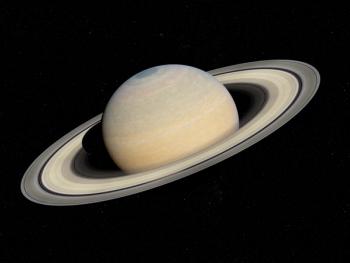
- July/August 2025
- Volume 40
- Issue 6
- Pages: 22–26
Albert A. Michelson: A Pioneer of Interferometry and Precision Optical Spectroscopy
Key Takeaways
- Michelson's interferometer was crucial for the development of FT-IR, enhancing molecular and material analysis.
- His precise speed of light measurements and the Michelson-Morley experiment challenged ether theories, influencing relativity.
In this “Icons of Spectroscopy” column, Spectroscopy Executive Editor Jerome Workman, Jr. explores the life and contributions of Albert Abraham Michelson, a graduate of the United States Naval Academy, who showed early brilliance in physics and mathematics, eventually resulting in a teaching position at the Academy and the Nobel Prize in Physics in 1907.
Albert Abraham Michelson was born in 1852 in Prussia and lived to be age 78, dying on May 9, 1931, in Pasadena, CA. He was raised in the American West and was the first American Nobel Laureate in the sciences. Best known for his pioneering work in optics and the precise measurement of the speed of light, Michelson was a transformative figure in the field of spectroscopy. His development of the interferometer laid the experimental foundation for Fourier transform infrared spectroscopy (FT-IR), an analytical method that modernized molecular and material characterization in science and industry. His commitment to the concept of measurement precision, his role as an educator, and his contributions to physics shaped the scientific landscape of the 20th century and continue to influence modern spectroscopic methodologies.
Introduction
Albert A. Michelson's name is often associated with the speed of light and the null result of the Michelson-Morley experiment, but his legacy is much broader. A naval officer turned physicist, Michelson's life was defined by a relentless pursuit of accuracy and innovation in optical science. His work transcended classical boundaries, reaching into metrology, astronomy, and spectroscopy. In particular, Michelson's interferometric techniques laid the groundwork for Fourier transform infrared spectroscopy (FT-IR), one of the most powerful existing tools for studying molecular vibrations and chemical structures (2).
Early Years
Albert Abraham Michelson was born on December 19, 1852, in Strelno, Prussia—now Strzelno, Poland—into a Jewish merchant family. In 1854, his family emigrated to the United States, settling initially in Virginia City, Nevada, before moving to San Francisco. Growing up in the raw and energetic environment of the American West, Michelson displayed early signs of scientific curiosity and exceptional aptitude for mathematics and optics (2–6).
During his youth, Michelson was also known for his meticulous nature and interest in the concept of precision in measurements—traits that would later define his scientific career. He frequently conducted small experiments and enjoyed measuring and observing natural phenomena, foreshadowing his later obsession with the measurement of the speed of light (2).
In 1869, at the age of 17, Michelson received an appointment to the United States Naval Academy at Annapolis from President Ulysses S. Grant, whom he had met personally. At the time, the Naval Academy prioritized naval tactics and seamanship, yet Michelson stood out for his intellectual brilliance in physics and mathematics. Graduating ninth in his class in 1873, he embarked on a two-year cruise in the West Indies before returning to the Academy as an instructor in physics and chemistry (2–8).
Chasing the Speed of Light
It was during his tenure as an instructor at the U.S. Naval Academy from 1875 to 1879 that Michelson conducted his first measurements of the speed of light. Inspired by Foucault's method, Michelson modified the experimental approach by collimating the light beam, which extended the optical path length and significantly improved measurement sensitivity. With limited resources but great ingenuity—and financial assistance from his father-in-law—Michelson constructed a highly accurate apparatus. By 1879, he had achieved a measurement of 186,325 miles per second, surpassing previous estimates in precision by two orders of magnitude (2–4).
This achievement was recognized not only for its technical accomplishment but also for its scientific importance. The experiment, conducted on the grounds of the U.S. Naval Academy and involving midshipmen, emphasized education, collaboration, and the intersection of military and scholarly endeavors. In 2024, the American Physical Society designated the U.S. Naval Academy as one of its designated Historic Sites in recognition of Michelson’s pioneering experiment (2).
Interferometry and the Michelson-Morley Experiment
In 1881, Michelson invented the interferometer, an instrument designed to detect minute differences in the speed of light traveling in perpendicular directions. The interferometer split a beam of light into two paths that, after reflection, recombined to form an interference pattern. The width and movement of the interference fringes allowed for the precise measurement of optical path differences (9).
In collaboration with Edward W. Morley in 1887, Michelson used the interferometer to search for variations in the speed of light due to the Earth’s motion through the hypothetical "ether." Their experiment, yielding a null result, indicated no such variations existed. This surprising outcome challenged prevailing theories of ether as the medium for light propagation and became a cornerstone in the development of Einstein's theory of special relativity (9).
Despite this revolutionary impact, Michelson remained reluctant to discard the ether concept entirely. Nevertheless, his experimental rigor reshaped the scientific world’s approach to space, time, and the nature of light.
Contributions to Spectroscopy and FT-IR Foundations
While Michelson did not invent Fourier transform infrared spectroscopy (FT-IR) in the modern sense, his development of the interferometer made FT-IR possible. The core of FT-IR is the Michelson interferometer. In FT-IR, a broadband infrared beam is split and recombined using an interferometer to produce an interferogram—a time-domain signal that is then mathematically transformed using a Fourier transform to yield a frequency-domain infrared spectrum (2–6).
This shift from dispersive to interferometric spectroscopy provided several advantages: greater signal-to-noise ratios, higher spectral resolution, faster acquisition times, and the capacity to scan a wide spectral range simultaneously. These improvements are essential in modern applications ranging from polymer analysis and pharmaceuticals to environmental monitoring and biochemical research.
Michelson’s interferometric designs, especially his refinements in mirror alignment and path-length control, were directly incorporated into the FT-IR spectrometers developed in the mid-20th century. His meticulous engineering of optical paths, beam-splitting methods, and fringe analysis techniques formed the bedrock of the spectroscopic technologies that followed.
Moreover, Michelson's 1893 work on measuring the wavelength of cadmium light with extreme precision and accuracy to establish a standard of length further underscored the connection between optics and precise spectroscopic analysis. His methods enabled more consistent calibration of spectral instruments—a critical requirement in both metrology and spectroscopy (2).
Michelson advanced high-resolution spectroscopy through his development of multiple-beam interferometry. His refinements to Fabry-Pérot interferometry and his work on resolving fine spectral lines enabled the precise measurement of atomic emission spectra. This level of resolution proved crucial in identifying isotopic shifts and hyperfine structure in spectral lines, contributing to the advancement of quantum mechanics and atomic theory (2–6).
The technique of Fourier transform spectroscopy (FTS), first conceptualized in his work, has been the essential tool in modern spectroscopic analysis. The principles of Michelson interferometry are the basis for FT-IR and FT-Raman spectroscopic methods, which allow for enhanced signal-to-noise ratios and rapid spectral acquisition. These methodologies are widely used in vibrational spectroscopy for materials and natural products research, as well as in medicine, astronomical spectrometry, and laser-based diagnostics.
Career and Teaching Legacy
After receiving a leave of absence from the Navy in 1880, Michelson studied in Europe, attending the Universities of Berlin and Heidelberg, and later the Collège de France and École Polytechnique in Paris. He resigned his naval commission in 1881 and accepted a professorship at Case School of Applied Science in Cleveland in 1883 (2–5).
Michelson held several academic posts throughout his career, including appointments at Clark University (Worcester, MA) and, beginning in 1892, the University of Chicago, where he became the first head of the physics department. Though his teaching style was often described as austere, he influenced generations of physicists through his clear, logical approach and groundbreaking research.
He rejoined the Navy briefly during World War I, developing optical devices such as rangefinders, which were integrated into naval equipment. After the war, he resumed his work at the University of Chicago and later at the Mount Wilson Observatory in California, where he continued his interferometric studies in astronomy (2–6).
Major Works and Publications
Michelson authored several important books and numerous scientific papers. His most influential publications include:
- On the Application of Interference Methods to Spectroscopic Measurements (1892). This bookpresents foundational work on the use of optical interference techniques—particularly the interferometer—for achieving precise spectroscopic wavelength measurements, laying groundwork for high-resolution spectroscopy (10).
- Light Waves and Their Uses (1899–1903): Based on his lectures at the University of Chicago, this work covered the fundamentals of wave optics and the applications of interference techniques (11).
- Velocity of Light (1902): This volume detailed his precise methods and results for measuring light’s speed (12).
- Studies in Optics (1927): This work summarized decades of experimentation and insights into optical instrumentation, including spectroscopic techniques (13).
These texts solidified Michelson’s role not only as a pioneering experimentalist but also as a lucid communicator of complex scientific principles.
Research Papers
These four foundational works by Albert A. Michelson span from 1882 to 1920 and represent critical milestones in the development and application of optical interference techniques. They include his early innovations in interferometry and refractometry (14), pioneering studies on the constancy of the speed of light (15), applications of interference to precision spectroscopy (16), and later extensions to astronomical measurements (17). Collectively, these papers reflect Michelson's instrumental role in shaping modern optical physics and experimental methodology.
Awards and Honors
Michelson's contributions were recognized globally. In 1907, he became the first American to receive the Nobel Prize in Physics, "for his precision optical instruments and the spectroscopic and metrological investigations carried out with their aid." This acknowledgment marked a turning point for American physics on the international stage (2–8)
His major award list includes the following (Table I).
- Rumford Prize (1888)
- FRS (1902)
- Matteucci Medal (1903)
- Copley Medal (1907)
- Nobel Prize in Physics (1907)
- Elliott Cresson Medal (1912)
- Henry Draper Medal (1916)
- Albert Medal (1920)
- Gold Medal of the Royal Astronomical Society (1923)
- Franklin Medal (1923)
- Duddell Medal and Prize (1929)
Michelson served as president of numerous scientific organizations, including the American Physical Society and the National Academy of Sciences. He received honorary degrees from eleven leading universities in the U.S. and Europe (2–8).
Legacy and Impact on Science
Michelson’s legacy is inseparable from the development of optical physics and spectroscopy. The instruments he devised, the precision he demanded, and the problems he tackled catalyzed a transformation in how science measured the natural world.
His most enduring influence lies in the evolution of FT-IR spectroscopy. Although not realized until decades after his death in 1931, FT-IR systems are direct descendants of his interferometric vision. These instruments are ubiquitous in laboratories today, enabling chemists, physicists, and biologists to identify molecular structures, monitor industrial processes, and explore unknown materials with high accuracy and speed (2–5).
The U.S. Naval Academy, where Michelson's seminal speed of light measurement was conducted, remains a symbol of his dual legacy: military professionalism and scholarly excellence. In 2024, the Naval Academy was designated an APS Historic Site to commemorate his contribution, reinforcing the enduring value of his scientific education and experimentation.
Conclusion
Albert A. Michelson was more than a physicist; he was a visionary of precision, a craftsman of scientific instruments, and a pioneer whose work bridged 19th-century science with 20th-century innovation. His contribution to spectroscopy, especially through the invention of the interferometer, laid the foundation for FT-IR, one of the most transformative analytical techniques of modern science.
Michelson pursued his life's work with tenacity, ingenuity, and a devotion to exactitude that set the standard for experimental physics. He redefined what it meant to measure light, not just in terms of speed or wavelength, but as a path to understanding the fabric of the universe. His instruments continue to resonate in the hum of modern spectrometers, a testament to the man who transformed light into one of science’s most powerful tools.
Table I: Summarizing the major awards received by Michelson, highlighting each award’s significance and how it relates to his key scientific achievements, especially in optics and spectroscopy (2–8).
References
(1) Unidentified Photographer. Portrait of Albert Abraham Michelson (1852–1931), Physicist; Smithsonian Institution Libraries, Scientific Identity: Portraits from the Dibner Library of the History of Science and Technology.
(2) Bill the Goat. USNA Notable Graduate: Albert A. Michelson; Naval Academy Tourism Blog, May 17, 2024.
(3) Albert A. Michelson; Wikipedia.
(4) Albert A. Michelson – Biographical; NobelPrize.org, Nobel Prize Outreach, 2025.
(5) Michelson, Albert Abraham; Encyclopedia of Cleveland History, Case Western Reserve University.
(6) Albert A. Michelson: The First American Nobel Laureate in Science; Center for History of Physics, American Institute of Physics.
(7) The Nobel Prizes/Les Prix Nobel Web Page. Available at:
(8) Livingston, D. M. The Master of Light: A Biography of Albert A. Michelson; Plunkett Lake Press: 2021,
(9) Shankland, R. S. Michelson–Morley Experiment. Am. J. Phys. 1964, 32 (1), 16–35.
(10) Michelson, A. A. On the Application of Interference Methods to Spectroscopic Measurements; Smithsonian Institution: Washington, DC, 1892; Vol. 842.
(11) Michelson, A. A. Light Waves and Their Uses; University of Chicago Press: Chicago, 1903; Vol. 2.
(12) Michelson, A. A. The Velocity of Light; University of Chicago Press: Chicago, 1904; Vol. 9.
(13) Michelson, A. A. Studies in Optics; University of Chicago Press: Chicago, 1927; Vol. 17.
(14) Michelson, A. A. Interference Phenomena in a New Form of Refractometer. Lond., Edinb., Dubl. Phil. Mag. J. Sci. 1882, 13(81), 236–242.
(15) Michelson, A. A.; Morley, E. W. Influence of Motion of the Medium on the Velocity of Light. Am. J. Sci. 1886, 3(185), 377–385.
(16) Michelson, A. A. On the Application of Interference-Methods to Spectroscopic Measurements.—I. Lond., Edinb., Dubl. Phil. Mag. J. Sci. 1891, 31(191), 338–346.
(17) Michelson, A. A. On the Application of Interference Methods to Astronomical Measurements. Astrophys. J. 1920, 51, 257.
About the Author
Jerome Workman, Jr. serves on the Editorial Advisory Board of Spectroscopy and is the Executive Editor for LCGC and Spectroscopy. He is the co-host of the Analytically Speaking podcast and has published multiple reference text volumes, including the three-volume Academic Press Handbook of Organic Compounds, the five-volume The Concise Handbook of Analytical Spectroscopy, the 2nd edition of Practical Guide and Spectral Atlas for Interpretive Near-Infrared Spectroscopy, the 2nd edition of Chemometrics in Spectroscopy, and the 4th edition of The Handbook of Near-Infrared Analysis. He is the recipient of the 2020 NYSAS Gold Medal Award (with Howard L. Mark). Author contact: JWorkman@MJHlifesciences.com ●
Articles in this issue
4 months ago
Carbon Structure and Raman SpectroscopyNewsletter
Get essential updates on the latest spectroscopy technologies, regulatory standards, and best practices—subscribe today to Spectroscopy.





